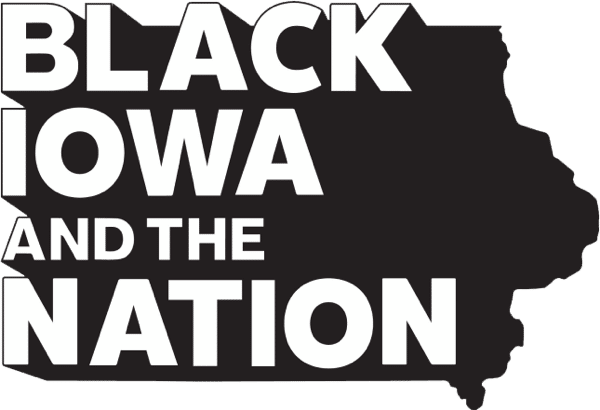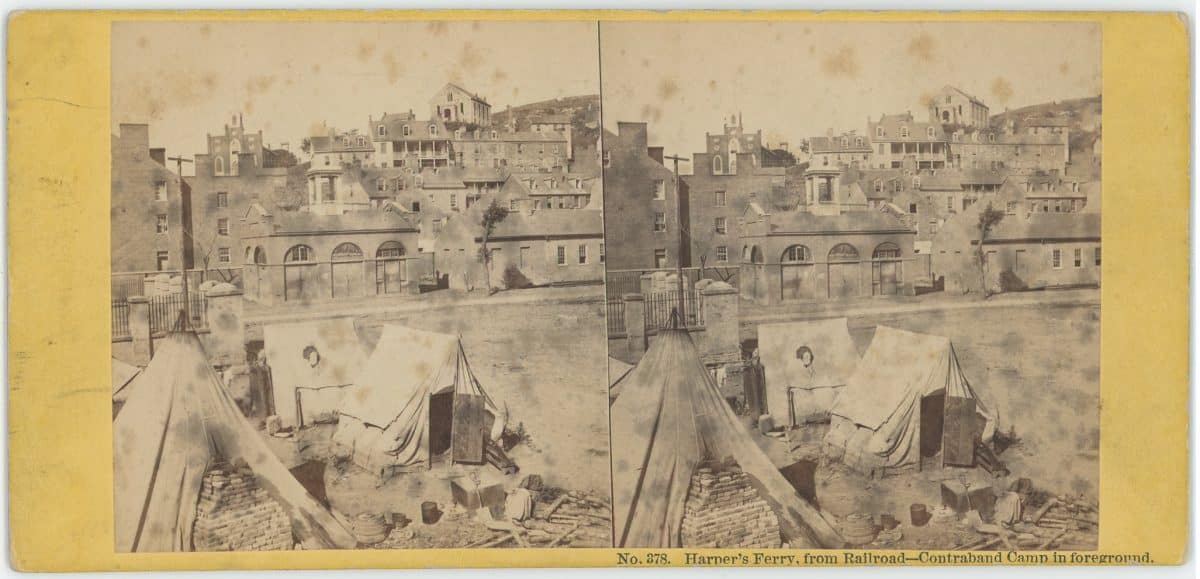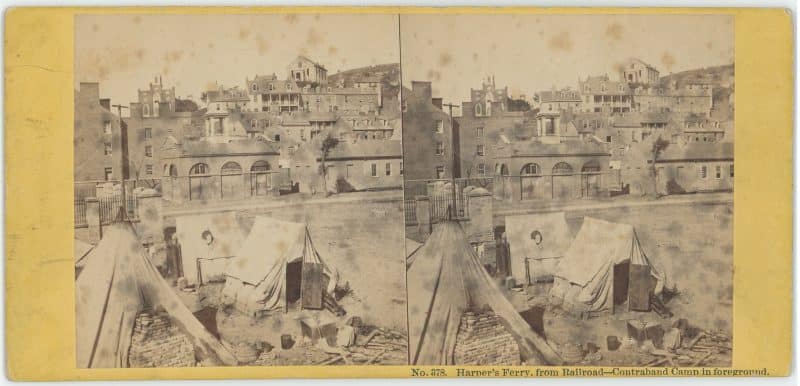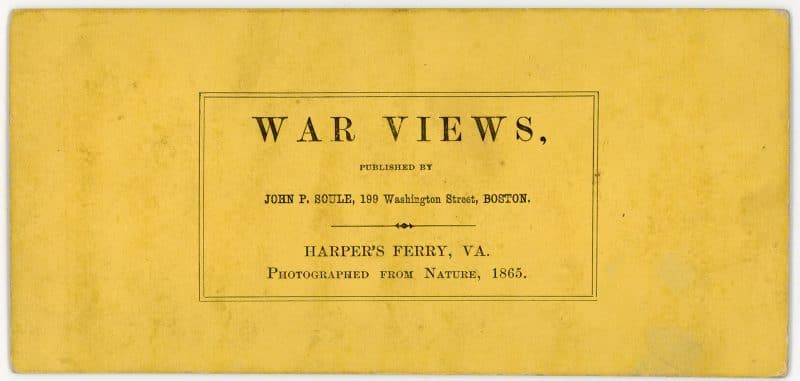This stereoview, mounted on yellow board, shows the Refugee Camp for freed African American Slaves at Harper’s Ferry by John P. Soule: a view with the Harper’s Ferry arsenal in the background and tents and tee-pee- like structures in the foreground. The caption below the photo says: “No. 278. Harper’s Ferry, from Railroad–Contraband Camp in foreground.”
Back: “War Views, Published by John P. Soule, 199 Washington Street, Boston. Harper’s Ferry, Va. Photographed from Nature, 1865″
Flat mount stereo photo measures approx. 6 3/4″ by 3 1/4” and is mounted on its original, square corner, yellow colored card mount. Printed text on the mount below the right hand Image identifies the view as “No. 378. Harper’s Ferry, from Railroad-Contraband’s Camp in Foreground”. Printed text on the reverse of the mount identifies the View as being from a series titled “War Views” Taken and published by J.P. Soule of Boston.
Pictured here is a view of a section of the town of Harper’s Ferry with a group of field tents in the foreground that were part of the Camp set up there that was used to house fugitive slaves many of whom became workers for the Union Army. During the Civil War, when the Union Army held Harpers Ferry, refugees from slavery traveled there in search of freedom—sometimes entire extended families, occasionally with wagons. By March of 1862 Federal forces established a “contraband” camp (the refugees were officially known as contraband) at Harpers Ferry to accommodate them. That same month one area resident, David Hunter Strother, remarked that “Hitherto the Negroes who had gone went light-handed and as fugitives; now the exodus has commenced in open day, laden with the spoils of the Egyptians. The sensation created is profound”. In fact Harper’s Ferry became a de-facto Refugee Camp where escaped slaves congregated and where many volunteered to help with labor needed by the Union Troops.




